The Vickers-Berthier light machine gun and the Vickers machine-gun
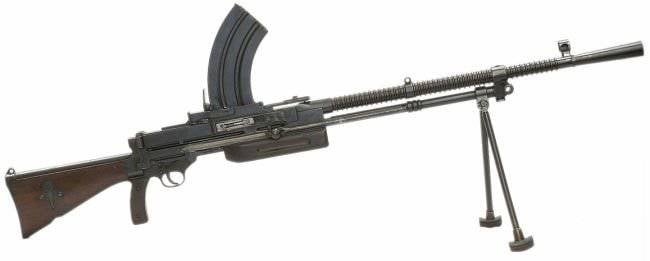
During the 20-30-s, Vikkers firmly offered this machine gun on the market, selling batches of machine guns to various countries. In the design made various changes. First of all, a replaceable barrel was introduced, the replacement of which took about 5 seconds. The advantages of the Vickers-Berthier machine gun included very smooth operation of automation, a small number of moving parts, and the ability to disassemble without using additional tools.
In the automatics of the machine gun, they implemented a scheme for discharging powder gases through the vent hole from the bottom of the barrel. The piston had a long stroke. The regulator, screwed into the gas chamber, had holes with a diameter of 1,2 and 3 of a millimeter, which changed the amount of gases that were discharged from the chamber. The receiver and the barrel are engaged with a rusk joint and fixed with a flag lock. Locking the barrel was carried out by skewing the bolt up. From the rear whisper shot was made. The figured protrusion of the bolt carrier during the movement of the moving system to the forward position lifted the back part of the bolt. In this case, the reference plane of the bolt was mounted on the supporting plane of the insert in the receiver. Drummer on the rack bolt-hole passed through the groove through the mash and smash the cartridge primer. The spent cartridges were thrown through a window located in the left wall of the receiver, which was covered with a shield.
Behind the receiver closed the trigger frame with a butt.
The trigger mechanism, assembled in the trigger frame, allowed to conduct a single and continuous fire. The flag-guard-translator, located above the trigger guard on the right, was limited to turning the trigger. If the flag is set to a single fire (position S), the trigger is turned at a large angle, breaking from the trigger lever. If the flag was set to continuous fire (position A), the hooking of the trigger and the trigger lever increased, and no disruption occurred. In the lower position D (on the fuse), the trigger was blocked. This simplified USM scheme operated quite reliably.
Vickers-Carden-Loyd artillery tractor with a Vickers-Berthier machine gun
Food was supplied from a sector box-mounted store installed on top (in connection with this, “Vickers-Berthier” was often confused with “Bran”). As ammunition, as in other British-made machine guns, they used a heavy X bullet in the 7 cartridge. The controls were a narrow butt, which has a folding shoulder strap and a pistol grip.
Rack mount rearranged with the help of a drum with a gear. The loading handle was on the right, it remained motionless during the shooting. The design of the machine gun consisted of 140 parts, including 25 screws and 15 springs. In general, the design was considered successful, but too light a barrel (weight with a front sight and a gas chamber 2,76 kg) limited the combat rate of fire even despite its quick replacement.
In the comparative tests conducted by the British army, "Vickers-Berthier" bypassed BAR, "Madsen" arr. The 1924 of the year and the ZB-26, however, a machine gun made at the request of the General Staff, which has a heavy barrel and the ability to mount on a tripod machine showed low reliability and survivability during intensive firing.
"Vickers-Berthier" MK 1 (sample 1928 of the year) was distinguished by a large forearm, to which the strap was attached to the swivels and the barrel with finning. Handguard machine gun Mk 2 (29 / 30's) had rounded shapes. In 1931, this modification was made for testing in India with some modifications.
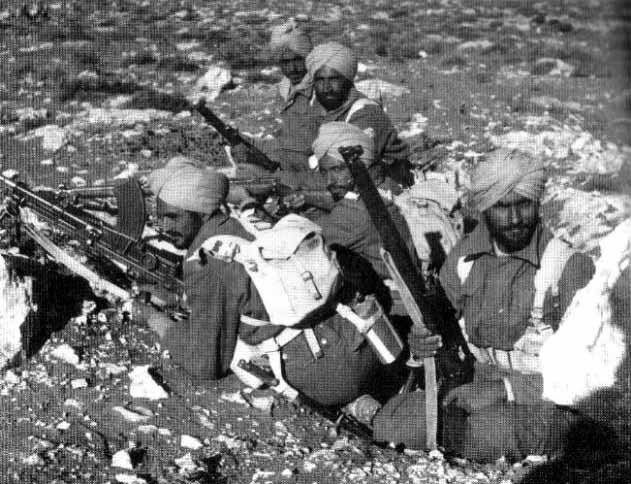
The Indian Army, which enjoyed a certain degree of independence when choosing weapons, adopted the Vickers-Berthier machine gun of the 1933 with a heavy barrel in 3, although some British Indian units had already purchased the 1 and the 2. The Vickers-Berthier machine gun of the 3 Mk was produced as the Vickers-Armstrong in the UK, and in India in Ishapur at the Indian Small Armz plant. On top of the receiver there was a label that included the inscription VICKERS-BERTHIER and the serial number. In Ishapur, an own modification of 3В was created, which was distinguished by increased reliability of the gas regulator in difficult climatic conditions. In total, 30 thousand Vickers-Berthier machine guns were produced in the UK and India (in 1937-1945, the Bran machine guns were released 10 times more). A certain amount of these machine guns was available in the British reserve parts.
"Vickers-Berthier" in service with the troops of India remained after she gained independence. Probably, some machine guns and currently remain in the warehouses of India and Pakistan. Manual "Vikkers-Berthier" for a long time met in various countries of the third world.
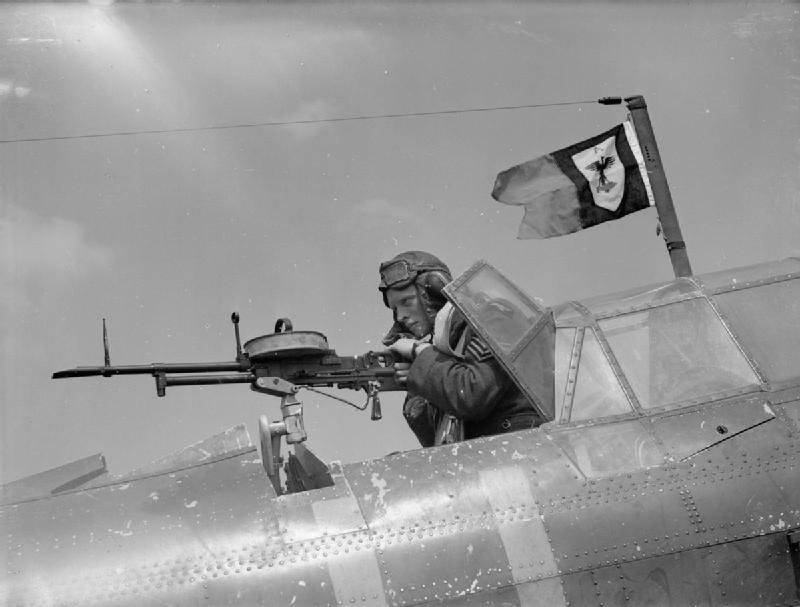
Back in 1928, on the basis of the Vickers-Berthier machine gun, they created aviation Vickers-K model, also known as VGO (Vickers Gas Operated, that is, Vickers with a gas vent automation system). Most of the Vickers-K (VGO) was transferred to the army, but they were not successful in the troops because they were bulky and had a very high rate of fire (although an attempt was made to reduce it). Paired "Vickers" -K were installed on anti-aircraft installations. A twin unit with 96 rounds disk magazines (initially the magazine was designed for 100 rounds, but the shooters preferred to unload the magazine) were installed on Land Rovers for SAS units and desert long-range reconnaissance units. The results of their use in North Africa were considered so good that these installations were used until the mid-60s. Twin units were also mounted on the American jeeps "Willis" for the Airborne.
Discharging procedure “Vickers-Berthier”: Switch on the fuse. Separate the shop by pressing on its latch. Inspect the chamber, make sure there is no cartridge in it. Turn off the fuse. Smoothly release the bolt carrier from combat platoon. Pull the trigger. Close window opening window for spent cartridges and store shield.
The procedure for incomplete disassembly of the Vickers-Berthier machine gun:
1. Unload a machine gun.
2. Pull back the charging handle, turn up the stem lock flag and separate it by turning up.
3. Release the bolt carrier from the platoon.
4. Rotate the trigger frame check box down, remove the contactor. Separate the trigger frame and butt.
5. Remove the bolt carrier and bolt, separate them.
6. Move forward with the bipod from the receiver.
In order to assemble a machine gun, all actions were performed in the reverse order.
Technical characteristics of the machine gunner "Vikkers-Berthier" Mk 3:
Patron - 303 "British Service" (7,7x56 R);
Weight weapons - 9,43 kg (no store);
Empty magazine weight - 0,34 kg;
The full length of the weapon is 1180 mm;
Barrel length - 607 mm;
Grooves - 5 right;
Initial bullet speed - 745 m / s;
Sighting range - 1600 yards (1463 m);
Effective range - 600 m;
The power supply system - a box magazine with a capacity of 30 cartridges;
The rate of fire - 450-500 shots per minute;
Fighting rate - 60 / 120 shots per minute.
Technical characteristics of the aircraft gun “Vikkero-K (VGO):
Patron - 303 "British Service" (7,7x56 R);
The mass of weapons - 8,86 kg (without controls and cartridges);
The full length of the weapon is 1016 mm;
Barrel length - 508 mm;
Grooves - 5 right;
Initial bullet speed - 745 m / s;
Power system - disk magazine with 100 capacity;
The rate of fire - 1050 shots per minute (later reduced to 950 shots per minute).
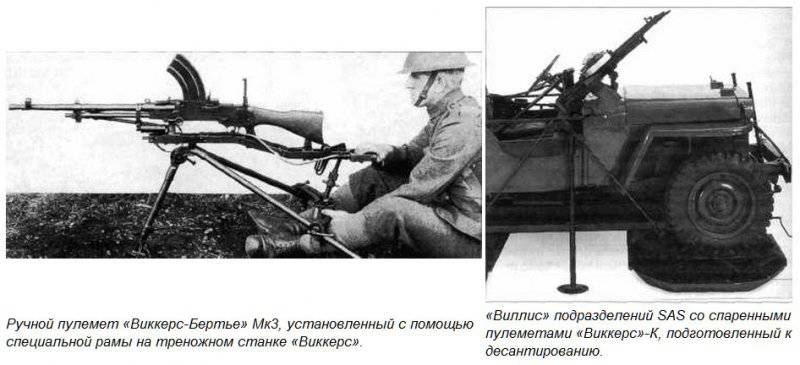
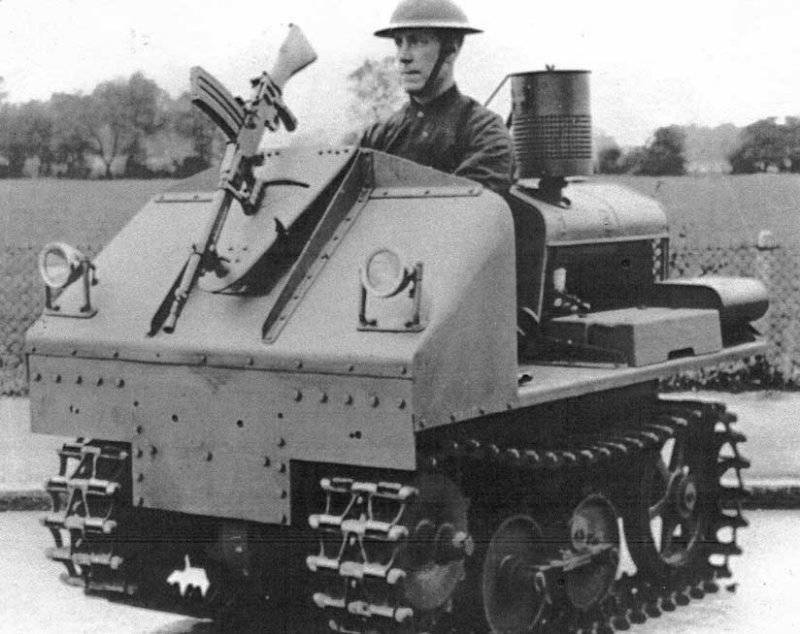
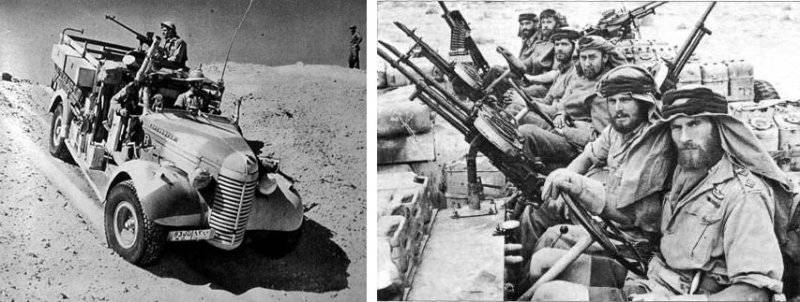
Information